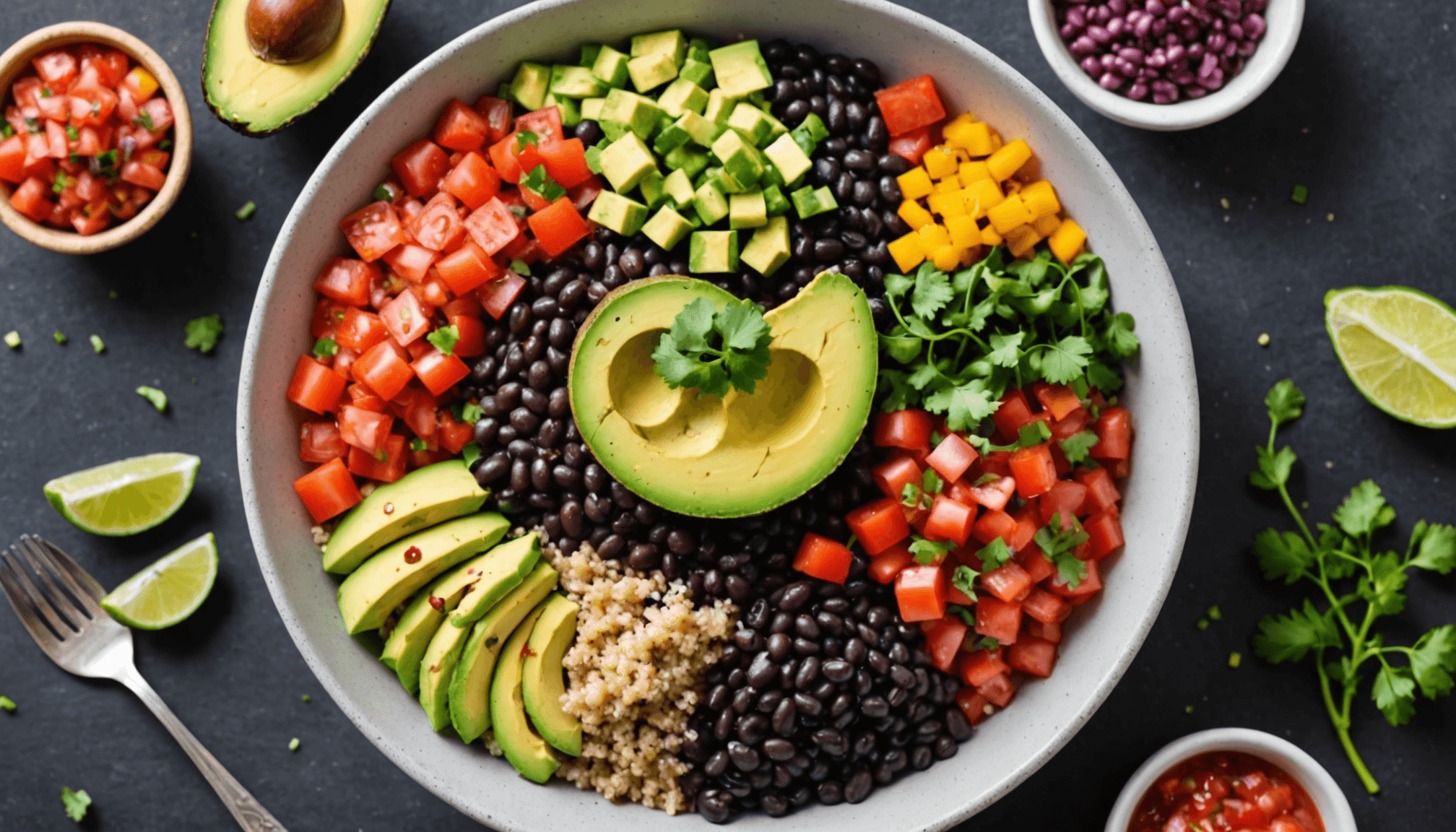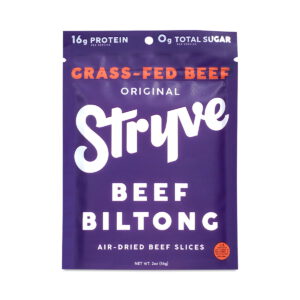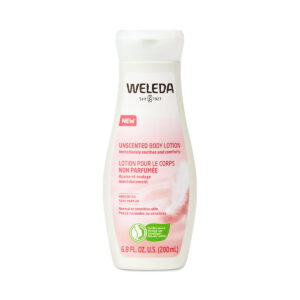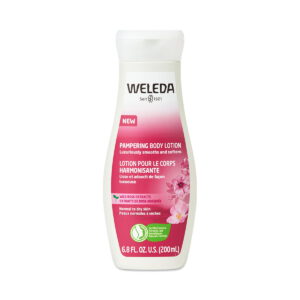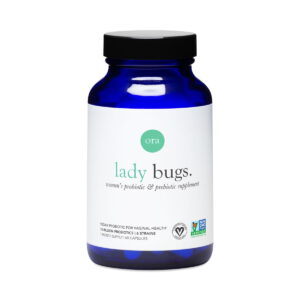- Healthy Alternatives to Popular Fast Foods
- Nutritional Benefits of Making Swaps
- Top 5 Fast Food Swaps You Can Make
- Snack Swaps for Healthier Cravings
- Beverage Alternatives to Sugary Drinks
- Tips for Incorporating Swaps into Your Diet
When it comes to grocery shopping, making thoughtful choices can lead to significant improvements in your overall health without sacrificing flavor or convenience. For those who love their fast food but want to incorporate more wholesome foods into their diet, scouting for healthy alternatives during your shopping trips is essential.
First, consider opting for whole grains instead of refined options. For example, choose brown rice or quinoa in place of white rice, and whole-grain bread instead of processed white bread. These not only provide more fiber but also keep you feeling fuller for longer. Don’t forget to check local markets for organic options; buying in-season produce can save you money while ensuring that you’re getting fresh, nutrient-rich ingredients.
Another fantastic idea is to swap out traditional dairy products for plant-based alternatives. Almond milk, coconut yogurt, and nutritional yeast can easily replace their dairy counterparts without sacrificing taste. These options are not only better for your body but also great for the planet, as they often have a smaller carbon footprint. When shopping online, make sure to read reviews about brand quality to avoid products with added sugars or preservatives.
When it comes to proteins, consider incorporating legumes such as lentils and chickpeas into your meals. These budget-friendly sources of protein are rich in fiber and can easily replace higher-calorie meats in your favorite fast food dishes. Additionally, consider looking for local brands or co-ops that provide organic, grass-fed, or pasture-raised meats, which often support sustainable farming practices and promote animal welfare.
For snack options, you can confidently reach for nuts, seeds, and popcorn instead of potato chips or sugary treats. These alternatives offer healthy fats and are packed with nutrients, making them perfect for mid-afternoon cravings. If you’re mindful of your shopping budget, buying in bulk can be a cost-effective way to stock up on these healthier snacks.
When browsing the condiment aisle, skip the sugary sauces and reach for healthier choices like salsa or hummus. These can add a kick of flavor to your meals without the unnecessary calories. Always check food labels for hidden sugars and sodium; even products positioned as “healthy” can contain additives that don’t align with your wellness goals.
Lastly, do not overlook the importance of food safety, particularly when purchasing online. Always shop from reputable websites with secure payment options, look for certifications, and check for clear expiration dates to ensure the products you receive are fresh. Whether you prefer shopping in-store or online, being aware of these guidelines can help you make informed decisions that align with your health aspirations while enjoying tasty and satisfying meals.
Nutritional Benefits of Making Swaps
Making food swaps can significantly improve your overall nutritional intake. By opting for healthier alternatives, you can reduce the risk of chronic diseases, manage weight more effectively, and enhance your energy levels. The benefits of making these conscious choices extend beyond just the immediate health implications; they can also foster a long-term appreciation for wholesome, nutrient-dense foods.
One notable advantage of switching to healthier options is the increase in essential nutrients. Many fast food items are high in calories yet low in vitamins and minerals. When you replace these with better alternatives, such as whole grains, fruits, and vegetables, you boost your intake of antioxidants, fiber, and healthy fats. For instance, choosing a whole grain wrap with lean turkey and a variety of veggies can offer significantly more fiber and nutrients than a traditional fast food sandwich.
Comparison of Nutritional Content
| Food Item | Calories | Protein (g) | Fiber (g) | Saturated Fat (g) |
|---|---|---|---|---|
| Classic Fast Food Burger | 350 | 17 | 1 | 13 |
| Whole Grain Turkey Wrap | 300 | 24 | 5 | 2 |
Shifting from standard fast food options to more nutritious snacks also contributes to better satiety and less impulsive eating. For example, swapping French fries for a side of mixed nuts or air-popped popcorn can provide healthy fats and protein, helping to keep you satisfied longer and reducing the likelihood of unhealthy snacking later in the day.
Moreover, many fast foods are loaded with added sugars and sodium, which can be detrimental to heart health and overall wellness. By making simple swaps—like choosing grilled chicken instead of fried or opting for marinara sauce over creamy Alfredo—you can dramatically lower both sugar and sodium intake while still enjoying delicious meals.
Another significant benefit is the improvement in digestive health. High-fiber foods, such as legumes, fruits, and vegetables, play a crucial role in maintaining a healthy gut. This fiber-rich approach can positively affect gut microbiota, promoting better digestion and nutrient absorption. In contrast, many fast food items are low in fiber and can lead to digestive discomfort and irregularities.
Increasing your awareness of food choices not only has personal health benefits but can also influence those around you. As you transition toward healthier alternatives, you may inspire friends and family to make similar changes, creating a ripple effect that promotes overall wellness in your community.
In conclusion, by making intentional food swaps and choosing healthier alternatives to favorite fast foods, you can enhance your diet’s nutritional profile, increase your energy levels, and improve your overall quality of life. The journey may require some adjustments, but the long-term health benefits are well worth the effort.
Top 5 Fast Food Swaps You Can Make
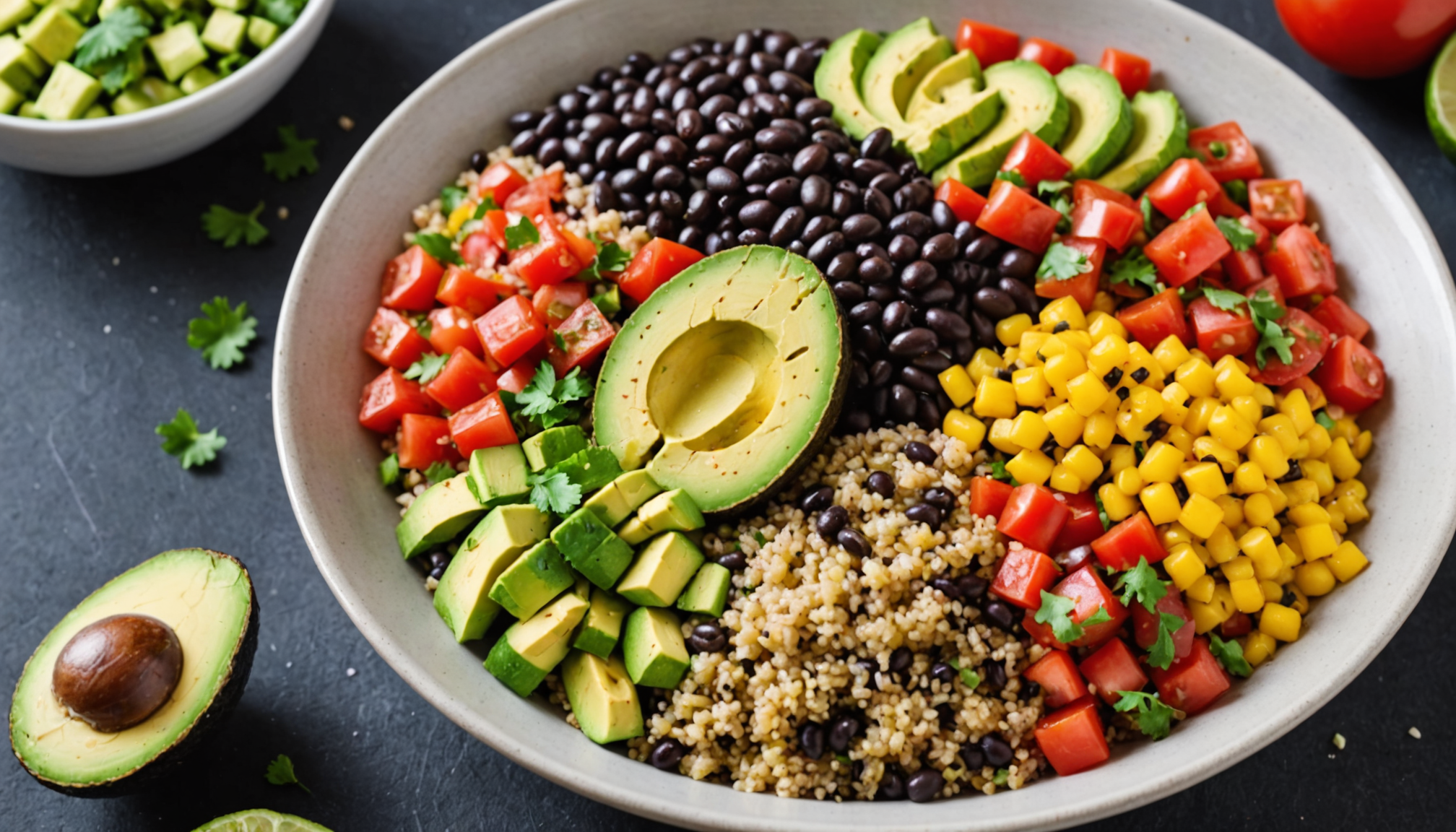
When it comes to making conscious choices for healthier eating, there are plenty of simple but effective food swaps you can incorporate into your grocery shopping routine. Here are five practical and delicious alternatives to popular fast food options that are sure to satisfy your cravings while boosting your nutrition.
- Swap Fried Chicken for Baked Sweet Potato Fries: Instead of indulging in greasy fried chicken, opt for baked sweet potato fries. Simply cut sweet potatoes into strips, toss them in a little olive oil, and season with your favorite spices before baking them in the oven. Not only are sweet potatoes rich in vitamins and minerals, but they also provide fiber and antioxidants while keeping the calories in check.
- Choose Quinoa Bowls over Burrito Bowls: Many fast food burrito bowls are loaded with ingredients high in sodium and unhealthy fats. Create your own quinoa bowl using a base of cooked quinoa topped with black beans, avocado, fresh salsa, and loads of veggies. This meal is not only colorful and satisfying but also offers a complete protein and healthy fats, keeping you full longer.
- Opt for Homemade Burgers instead of Drive-Thru Options: For a healthier take on burgers, use lean ground turkey or plant-based patties. Load them up with fresh veggies, such as spinach, tomatoes, and onions, and serve them on whole-grain buns. This swap significantly reduces calories and can easily be tailored to any dietary preference, especially for vegans using chickpea or lentil patties.
- Replace Smoothies with Whole Fruit: Many smoothies, especially from fast food chains, can be high in added sugars. Instead, enjoy whole fruits or make your own smoothies at home. Using real fruit along with spinach or kale provides the necessary nutrients without the unwanted sugars. Bonus points for adding nuts or seeds to your smoothie for extra protein and healthy fats!
- Switch Ranch Dressing for Greek Yogurt Dip: If you love dipping vegetables or salads in ranch dressing, try substituting with a homemade dip using plain Greek yogurt. Mix it with garlic powder, dill, and a splash of lemon juice for a tangy, protein-rich alternative. This swap cuts down on unhealthy fats and boosts your meal’s protein content while maintaining a creamy texture.
As you incorporate these swaps into your regular grocery list, don’t forget to consider local, organic, and budget-friendly sources. Visiting local farmer’s markets can be a great way to find fresh produce, while many online grocery delivery services offer organic options at competitive prices. Be sure to compare prices and look for seasonal produce to maximize your savings.
When shopping online, always check for customer reviews to gauge the quality of products, especially for items like grains and seeds that can vary widely in freshness. Furthermore, ensure your payment details are secure, and check for clear return policies in case you need to make exchanges. With a little planning and mindfulness, you can continue to enjoy your favorite fast foods in a healthier, home-cooked way.
Snack Swaps for Healthier Cravings
Snacking is a pivotal part of our daily routine, often acting as a bridge between meals or a satisfying treat after a long day. However, many popular snacks are laden with unhealthy fats, sugars, and additives that can derail your health goals. By making simple and nutritious food swaps for your favorite snacks, you can satisfy your cravings while boosting your overall health.
Consider replacing traditional potato chips with roasted chickpeas or spiced nuts. Roasted chickpeas are not only crunchy but also packed with protein and fiber, making them a filling alternative that can stave off hunger. To prepare, simply toss canned or cooked chickpeas with olive oil and your favorite seasonings before roasting them in the oven until crispy. Nuts, on the other hand, provide healthy fats and can be flavored in countless ways, from sweet cinnamon to spicy chili. Just be mindful of portion sizes, as nuts are calorie-dense.
For those with a sweet tooth, think about swiping out sugary granola bars for homemade energy bites. These can be created easily by blending oats, nut butter, honey, and your choice of add-ins like dark chocolate chips or dried fruit. Energy bites offer a controlled portion of sweetness and nutrition without the added preservatives often found in commercial bars.
In moments when you crave something crunchy and salty like popcorn, opt for air-popped versions dressed up with a sprinkle of nutritional yeast or your favorite seasonings instead of butter and artificial flavorings. Air-popped popcorn is high in fiber and can be a light, satisfying snack that keeps you feeling full.
Fruit is an excellent alternative to sweet, processed snacks. Instead of reaching for candy bars or pastries, try swapping them with apple slices and nut butter or a bowl of mixed berries. These combinations not only satisfy your sweet cravings but also provide vital nutrients and antioxidants. Pairing fruit with protein-rich options like Greek yogurt or cottage cheese elevates the snack, making it even more nourishing.
When it comes to dips, traditional cheese dips or ranch sauces can be high in fat and calories. Instead, prepare a refreshing avocado dip or a homemade hummus. Avocado provides heart-healthy monounsaturated fats, while hummus, made from chickpeas, lemon juice, tahini, and garlic, offers fiber and protein, turning your vegetable sticks or whole-grain crackers into a nutritious snack.
Healthy alternatives to favorite snacks can seamlessly fit into your diet while still allowing you to enjoy the flavors you love. Making these thoughtful food swaps not only enriches your overall health but can also lead to a more mindful eating experience, where you learn to listen to your body’s cravings and fuel it accordingly.
“Healthy eating is a way of life, so it’s important to establish routines that are simple, realistically can be incorporated into your lifestyle, and ultimately sustainable.” – Horace, Nutrition Expert
Beverage Alternatives to Sugary Drinks
 Choosing healthier beverages is essential for maintaining a balanced diet, especially when navigating the temptations of sugary drinks commonly found at fast food outlets. Many fast-food beverages pack in excessive amounts of sugar and calories, which can lead to energy crashes and contribute to long-term health problems like obesity and diabetes. Thankfully, there are numerous healthy alternatives that can easily be swapped in, making it possible to quench your thirst without the guilt.
Choosing healthier beverages is essential for maintaining a balanced diet, especially when navigating the temptations of sugary drinks commonly found at fast food outlets. Many fast-food beverages pack in excessive amounts of sugar and calories, which can lead to energy crashes and contribute to long-term health problems like obesity and diabetes. Thankfully, there are numerous healthy alternatives that can easily be swapped in, making it possible to quench your thirst without the guilt.
Start by replacing sugary sodas and energy drinks with sparkling water infused with fresh fruit. Not only do these fruity bubbles satisfy your craving for carbonation, but they also provide vitamins without the added sugars. You can create a refreshing beverage by muddling berries, cucumber, or citrus slices in your glass, then topping it off with plain sparkling water. This not only enhances the flavor but also adds a visual appeal that mainstream soft drinks lack.
If you’re a fan of smoothies, consider making your own at home using whole fruits, vegetables, and nutritious bases like almond milk or coconut water. This not only ensures that you’re in control of the ingredients but also allows you to avoid the hidden sugars often found in fast food smoothie options. A banana, a handful of spinach, and a tablespoon of nut butter blended with almond milk create a creamy, satisfying drink that energizes you throughout the day.
For those who enjoy iced tea or coffee, opt for unsweetened varieties instead of the sweetened versions common at many fast-food chains. Brew your own iced tea at home, flavoring it with herbs or spices like mint or cinnamon for a refreshing twist. If coffee is more your style, consider cold brew with a splash of almond or oat milk, which can be both delicious and lower in calories than standard coffee shop offerings.
In the realm of juices, it’s best to steer clear of the store-bought varieties that can be high in sugar and low in nutrients. Instead, juice fruits and vegetables at home, or dilute 100% fruit juices with equal parts water to lower the sugar content while still enjoying the flavors. Combining carrot and orange juice, for instance, offers a nutrient boost without overwhelming sweetness.
Lastly, herbal teas can serve as an excellent alternative to sugary beverages, especially during colder months. Sipping on chamomile, peppermint, or ginger tea not only provides hydration but also comes with various health benefits such as aiding digestion or promoting relaxation. If served iced, these teas offer a refreshing option that’s akin to soda without the disadvantages.
Incorporating these healthy beverage swaps into your routine not only contributes to better hydration but also enhances your overall well-being. As you explore these alternatives, don’t hesitate to experiment with flavors and combinations that please your palate. A willingness to try new ingredients invites creativity into your health journey, driving you to discover even more nutritious choices every day.
- What are some healthy alternatives to soda?
- Instead of soda, try sparkling water with fresh fruit, herbal teas, or homemade smoothies made with whole fruits and vegetables. These options provide flavor and hydration without the high sugar content.
- Can I make my own healthy juices?
- Absolutely! You can juice fruits and vegetables at home to control the ingredients and sugar levels. Diluting 100% fruit juice with water is also a great way to enjoy a refreshing drink with less sugar.
- Are there any low-calorie drink options at fast food restaurants?
- Many fast food restaurants offer unsweetened iced tea or coffee, which can be low in calories. Be sure to check for other options on the menu, like flavored sparkling water.
- How can I make my smoothies healthier?
- To make healthier smoothies, use whole fruits, leafy greens, and bases like almond milk or coconut water. Avoid pre-made smoothies that are high in added sugars.
- What herbs or spices can I add to drinks for flavor?
- Herbs like mint or basil, and spices such as cinnamon or ginger, can add delightful flavors to your drinks without additional calories or sugars. Experimenting with these ingredients can enhance your beverages significantly.
- Is it okay to drink fruit juices regularly?
- While fruit juices can be nutritious, they can also be high in natural sugars. It’s better to consume them in moderation and choose 100% juice without added sugars, or dilute them with water.
- How can I flavor my water without adding calories?
- Infusing your water with slices of citrus fruit, berries, or cucumber can add flavor without adding calories. You can also use herbs for a refreshing twist to your hydration.
Tips for Incorporating Swaps into Your Diet
Incorporating healthy food swaps into your daily diet doesn’t have to be overwhelming. Instead, treat it as a fun challenge to explore new ingredients and flavor combinations that suit your family’s tastes and dietary needs. Start small—pick one or two specific fast food items that you often indulge in, and find suitable healthy alternatives for them. For example, if you often grab a burger on the go, try making your own at home using lean ground turkey or a plant-based option. Tailor the toppings to your liking, using fresh vegetables and whole grain buns to elevate the meal’s nutritional profile.
Next, make meal prepping a part of your weekly routine. Dedicate a few hours on the weekend to prepare snacks or meals that incorporate your new healthy swaps. Batch-cook quinoa and pre-chop veggies, allowing you to quickly assemble nutritious bowls or wraps throughout the week when time is tight. This not only saves you time but helps you resist the temptation of fast food options when hunger strikes.
Plan your meals around whole foods and seasonal produce, allowing local availability to guide your selections. Visiting farmer’s markets or local co-ops is an excellent way to find fresh, organic ingredients while supporting your community. Be adventurous with your choices! For instance, trying out a variety of leafy greens, like kale or Swiss chard, can add diverse nutrients to your meals compared to standard iceberg lettuce.
When shopping, keep a list of your go-to food swaps handy—this helps you stay focused and avoid impulse buys of less healthy options. Additionally, consider shopping with your family. Involving kids or partners in grocery shopping can educate them about making healthy choices and inspire them to opt for nutritious snacks. You can even create a game where each family member chooses a few healthy alternatives to popular fast food items, making it a collaborative and enjoyable experience.
For online shopping, take advantage of grocery delivery services that align with your health goals. Browse the inventory for wholesome options, ensuring you read product descriptions and ingredient lists thoroughly. This not only helps you find food swaps but also keeps your pantry free from unnecessary additives. Look for brands committed to health and quality, as many stores today highlight organic, vegan, and budget-friendly choices, making it easier to stick to your dietary preferences.
Remember to prioritize food safety when making purchases. Always check the integrity of packaging before buying, especially when ordering perishables online. It’s also wise to verify the delivery process; ensure that items will arrive fresh, and don’t hesitate to contact customer service if you have concerns about shipping times or product quality.
By intentionally weaving healthy food swaps into your grocery shopping practices and meal planning, you can enjoy familiar flavors in a more nutritious format, ultimately enhancing your well-being without sacrificing taste or convenience.
New Customers Offer!
Free Gift for the new customer
$24 Value, When You Subscrib Visit Thrive Market
